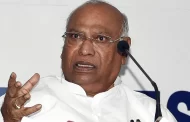Demonetisation may have become a distant memory in the cities and may not be a poll issue. But in smaller towns in UP, memories are still fresh and small industries are yet to recover

“Our clientele comprises Muslims in the summer season and Hindus in the post-Diwali season. Most of us here stock up green bangles during the season as they are quite popular among Muslim women. Later in the year, we mostly sell red and bangles of mixed colour,” explains Rajeev, an upper-caste Hindu and a warehouse owner.
Baniyas and other Hindu trading castes own most of the 5,000 glass bangle warehouses in the city. Local traders peg the worth of the industry in the vicinity of Rs 300 crore, with each owner pocketing an annual average profit of Rs six lakh.
Despite BJP’s efforts to push its divisiv agenda, business has been going on as usual, regardless of the different political inclinations of the warehouse owners and the buyers. While Baniyas are known as the loyal vote bank of the BJP, Muslims and even lower caste Hindu women who wear the bangles have traditionally thrown their weight behind outfits such as Samajwadi Party, Bahujan Samaj Party (BSP) and the Congress.
However, demonetisation did what BJP’s sectarian politics failed to do in India’s only glass industry centre. In fact, the industry got so crippled after the overnight wiping out of cash that locals say it might never be able to recover from demonetisation’s after-effects. Worst hit were the owners, seen as the main cheerleaders of the BJP.
Manish Moondhara, the owner of one of the larger bangle warehouses says, “What they failed to grasp was that ours was a cash-reliant industry. Most of the transactions used to take place in cash. Demonetising high-denomination current meant that neither the whole-seller nor the retailer were left with any cash to transact business.”
Such was the enormity of the “demonetisation disaster” here that glass bangle retailers from other states, including Haryana, Bihar and Madhya Pradesh, who used to come down to Firozabad to buy goods in bulk were left without cash as well, resulting in a steep slump in sales.
Manish goes on to inform that labourers in the glass industry were mostly Muslim men and some others from lower castes, including Jatavs and a few Yadavs from surrounding villages.
The first few months after the note ban were particularly hard as there was virtually no currency circulation in the market,” says Prashant Maheshwari, who is a wholesaler in Bihar. “Ours were legitimate cash earnings. After demonetisation, it started to be viewed as black money in the eyes of the government,” he complains.
More than two years later, the industry is yet to see sales recover to pre-2016 levels. Traders say while the cash circulation is back to pre-demonetisation levels, there is still not much cash available in the market.
“It seems that transacting cash with the banks has become too complicated. Moreover, how could one expect the traders to account for every pie of cash that we make, when the retailers who buy most of our goods don’t want to come on paper with their purchases,” says Manish.
Scratch the surface and anger against demonetisation bubbles up, which locals here say would be seen in the voting percentage.
“We will avenge the hardships caused due to demonetisation at the polling booth. Our family members stood in queues at banks to exchange old currencies. We couldn’t go to work because of that. We used to sleep in the queues back then. How can we forget all that,” asks small-time worker Ram Kishan Yadav, a local resident hailing from the politically influential Yadav community.
Goods and Services Tax
A double-whammy was the introduction of the Goods and Services Tax, launched amid much fanfare by Prime Minister Narendra Modi in a specially convened midnight session of the Parliament in 2017.
“It is a good idea to bring everything under a formal economy. But the industry here involves cooperation from retailers. The very fact that retailers whose sales are below Rs 20 lakh aren’t required to register for GST has worsened matters,” says Prashant.
While the wholesalers here sell their bangles to retailers, many of them don’t want to show these transactions on paper and are under no pressing obligation to do so, which in turn piles up pressure on the wholesalers.
A majority of the retailers involved in bangle trading business, not only in Firozabad, but across the country, fall within the bracket of below Rs 20 lakh.
Perhaps, what’s wrong with the GST is best understood in these bylanes of western Uttar Pradesh, as the woes trickle down to the labour and ultimately affecting the financial well-being of the region.
Same story plays out in Agra
Everyone vividly remembers the evening of Dec 8, 2016, in Agra’s Sadar Bazar, the hub of region’s leather business.
Before then, our profits used to be between Rs 1,500- Rs 2,000 every single day. Now, they have come down between Rs 200-Rs 300. As a consequence, we had to shed labour and scale down purchase of raw materials,” complains Saleem.
To make his point, he gestures towards the deserted streets of the popular local market. “Sadar Bazar used to teem with visitors on Sundays. Now, there are hardly any customers here,” he laments.
Not only the businesses, many of them owned by Muslims, were hit, but lack of cash to pay for workers’ wages took its toll on the labourers, most of them members of Chamar community.







































